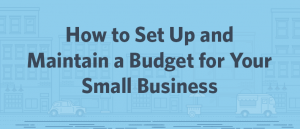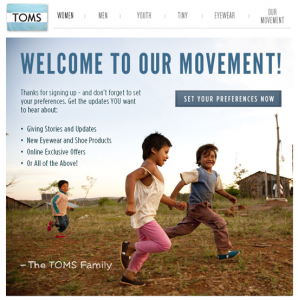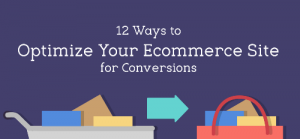September 6, 2016
Your biggest competitor has lowered their prices, you are concerned about sales and you’re tempted to reduce your prices to match theirs… But responding to price wars could do more harm to your long-term sales strategies than good.
Before reducing your prices to match theirs, there are a lot of considerations to take into account when deciding if you are going to respond or to ignore. When it comes to price wars, a business is only likely to ‘win’ a price war for one of two reasons:
- It has been able to considerably lower its overall costs. Meaning that as they lower their prices, the cost per unit is lowered and therefore their profits remain the same.
- If the business is breaking into a new market, starting off with a very low market share, and have the financial backing and resources to offer a lower price than competitors. Simply put, allowing them to drive the market price down and break into the new market quickly without hurting their bottom line.
But it most small business cases, assuming your products have been priced correctly, it is much better to survive a price war than try to win it. And to do that, you need to differentiate your product and possibly segment your customers.
As a rule of thumb, it is more effective for sales to concentrate on customer experience, your overall service, the quality of your products and ensuring that you are exceeding the expectations of your customers. Ultimately avoiding getting into price war with competitors which more often than not results in losses for everyone involved, including the instigator.
But before we can get into the ‘how’, we need to know the ‘why’.
Why Has Your Competitor Dropped Their Prices?
There are a few reasons why your competitor has dropped their prices. It could be temporary due to them trying to get rid of excess stock. Or more commonly, they could be starting a price war to increase their market share. A competitor with half of the market share is less likely to start a price war than a business with a 20% market share.
Let me explain: From small business to large companies, competitors use price drops as a fast way to grow their market shares in a competitive market. But is this ‘easy way out’ the best practice? No! Why? Because more often than not this could damage the whole market as everyone lowers prices in response. This could result in all parties involved in the price war comes out with the same market share, but with lower prices.
So the first thing to do is to find out exactly why your competitor is dropping their prices. Read their press releases, blogs and marketing to find out what drives their price reduction before engaging.
In this blog we will outline the steps you need to take if your competitor has reduced their price as well as offer workable alternatives to entering into a costly price war. We will also provide you, in the event where you are forced to engage in a price war, with better short-term price dropping practices.
Step 1: Find Out If Your Competitor’s Reduced Prices Will Impact Your Business
The first step is to determine if price cuts will even impact your business at all. You can do this by talking to your customers, doing market research, calculating your customer loyalty and auditing your marketing strategies.
Talk to Your Customers
Pick up the phone or send out an email and talk to your customers. Touching base with your customers, seeing what they feel about your prices and why they chose you over possibly less expensive competitors, can yield great insights.
Valuable Marketing Surveys
There are a host of free survey tools such as Google Forms and Survey Monkey, that allow you to get valuable data into not only what your customers are thinking, but the market in general.

Survey Monkey offers a survey template that incorporates Net Promoter Score (NPS), a survey system specially designed to calculate how loyal your customers are. The higher your NPS score, the higher your customer satisfaction and loyalty is. NPS is centered around one basic question:
“How likely are you to recommend our organization to a friend or colleague?”
The rating your customer chooses classifies them into three main categories: detractors, passives or promoters. Detractors are those customers who are likely to not recommend your business and quite possibly could do the opposite. Passives are those customers who are neutral or indifferent about your business. Promoters are your loyal customers who trust and recommend your brand.
Review and Audit Your Marketing
Is your marketing set around affordability and price or quality. If your marketing is focused solely on price, but your competitors are out-pricing you for the same product, then you’re doing your business harm. Have a look at your messaging across all your marketing channels, your website and landing pages: Are you positioning yourself, for example, as the cheapest or the best? If it’s the latter, you are less likely to be affected by your competitor’s price reduction.
Step 2: Start Marketing Your Products Beyond Price
After completing the audit above, the next step is to adjust your product marketing and content away from the concept of affordability. In the long run, this will help position your products in the eyes of your customers based on their benefits, not their price – helping to protect you from price wars in the future.
Business giant Amazon is doing just that with their new Kindle Oasis E-reader, which is selling for about $ 200 more than its own entry-level Kindle and other price-competitive e-readers. Instead of focusing on the affordability of such a type of e-reader, they focus on the value of the product: its weight, its battery life and overall comfort. The three things they know their customers want out of an e-reader and those things that they wouldn’t mind paying more for.

Change How Your Products Are Displayed Online
Are you highlighting these benefits and features in the way you describe and display your products on your online store? If not, you may want to consider revamping your descriptions like the above example and refreshing your product images. The quality of your images makes a big impression to your customers on the quality of your product and you don’t have to be a Photoshop guru to do it. Looking for more product photo tips? Check out our Product Photography Tips and Tricks post.
Add Customer Reviews and Testimonials
Testimonials from happy customers on your site and social media pages is a great way to show potential customers that you are offering a quality product they can rely on. Why? Because a customer is more likely to believe other customers. A good example of this is Angelus Direct who display thousands of their success stories on their home page.

An easy way to get these testimonials is to ensure that your Facebook page has been set to allow for visitor comments. People are much more inclined to post a quick comment on your Facebook page and it also gives you the opportunity to engage more with your customers.

Step 3: Improve Customer Service and Experience
In today’s market, regardless of which niche your business falls into, there is no denying that customer service and customer experience can make or break your business. Customers are said to be as much as five times more likely to buy a more expensive product, if the customer experience is good. Here are some tips to help you improve your customer service and customer experience.
Research Your Competitors
The first thing to do is to look at what your competitors are doing with regard to customer service and experience. Log onto their sites, send them emails and look at their FAQs. How quickly are they responding? Do they offer 24 hour support when you don’t? Does your own customer service and user experience compete?
Test Your Checkout
Checkout is one of the most important functions on your websites. If the user experience is lacking here, you may also find that nearly 70% of your possible customers abandon the online shopping process with items in their carts. If you want to see the reasons given by this big percentage, Statista survey: Reasons for Online Shopping Cart Abandonment offers invaluable insights.

As you can see, according to their stats, a whopping 56% of these checkout dropouts give ‘unexpected costs’ as their reason. This could be that the online stores in question never disclosed hidden costs in an attempt to keep their displayed marketing prices lower to compete with their competitor’s prices. This tactic doesn’t just make for a bad customer experience, but causes mistrust in your brand and/or product.
Adjust Customer Service Policy
These include things like quicker refunds, offering money-back guarantees or free shipping on returns. Enhancing your customer service and altering policy is an effective way to one-up your competitors despite any price drops they may introduce. Not to mention that trust badges are proven to boost sales as they effectively increase conversion rates.
Step 4: Deciding Whether to Compete
There are three main reasons why businesses ultimately decide to enter the ring in a price war. These are:
- If they’re a big company with multiple products where they can drastically reduce prices in one area, while still reaping profits in another.
- If they can win a price war and their profits can sustain it long-term due to cost cutting.
- If their product will go to waste if not sold or used, such as perishable food products or Airbnb rooms. In such cases, if your sales drop considerably, it’s better to drop your prices to compete at least short-term to avoid stock loss.
With competitors who match you equally in all areas discussed, there may be no choice but to drop your prices. However, before you indefinitely decide to drop your prices first ask yourself if your customers even know about your competitors prices?
Once you’ve done the research and you decide a price reduction is needed, try these short-term price reduction tactics. These will allow you to not only test your market to see if prices will indeed drive your sales up, but allow you to do it without making long-term price cuts which could harm your bottom line.
Special Offers and Discounts
Offering discounts and/or special offers is a good place to start to test lower prices on your market. One of the most efficient ways to do this is by using tools like StoreYa’s Coupon Pop, which enable you to offer discounts as a short-term way to boost sales, without changing your pricing strategy.

Is Customer Segmentation an Option?
Price segmentation is a way of charging customers differently for products and services, depending on which segment they are in. This can include student prices, senior discounts or coupons aimed at specific customers based on VIP status or their location. If this is possible in your niche market, this is a good way of lowering prices for competing market segments, while keeping overall prices the same.
Whatever you decide, as long as you keep your eye on the prize – a long-term increase in sales – you can’t go wrong. If you are looking for some more ideas to grow overall loyalty in order for you to survive your next price war comfortably, see our tops Ways to Boost Customer loyalty post.
Have more questions or some suggestions of your own? Comment below.
Business & Finance Articles on Business 2 Community(137)








